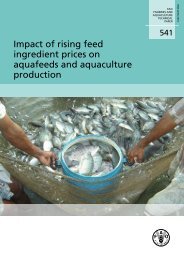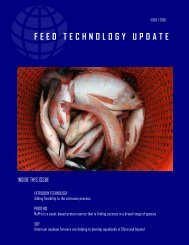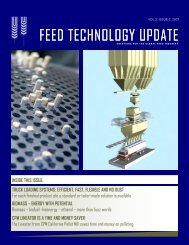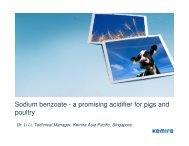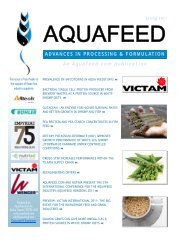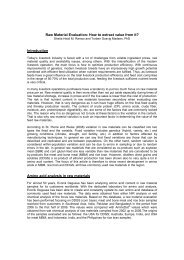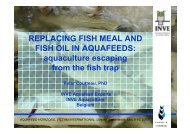Download - AquaFeed.com
Download - AquaFeed.com
Download - AquaFeed.com
- No tags were found...
You also want an ePaper? Increase the reach of your titles
YUMPU automatically turns print PDFs into web optimized ePapers that Google loves.
Page 4The team’s attentions quickly turned towards the live prey (Artemia), said Nathalie LeRouilly, production manager for Aquastream.While this organism provides essential nutrients for the development of marine fish larvae,it is a live animal and therefore quite variable – from its nutritional value and whereit is harvested, to how it is enriched and packaged. Artemia can also harbour bacteria andit has been found that feeding live prey to larvae can cause problems such as enteritis,stress, and create an imbalance in the rearing environment, which in turn can significantlyreduce survival rates.“Identifying a problem is one thing; finding a resolution is another. We therefore decidedto work in parallel on two objectives: the first, to improve the quality of our live prey; thesecond, to partially or totally substitute the live prey with microparticles, namely Skretting’sGEMMA Micro,” says Le Rouilly.Aquastream had previously, between 2004 and 2006, experimented with the micro pelleton seabream (Sparus aurata) with some success.“With this experience, we were able to transfer the protocol to seabass. All the ingredientswere there: a positive first experience, a confident investor and a team of experiencedand motivated professionals.”In 2008, 25 percent of the <strong>com</strong>pany’s own larval tanks were dedicated to the developmentof this new protocol. The results were so positive that the decision to apply the protocolthroughout the operation followed the next spring. In the last four years, Aquastreamhas significantly reduced the variability of the 60-day survival rates and has increasedthe number of farming cycles (graph 1).“We have reduced the necessary quantity of Artemia by 97 percent. We only need 5kg ofArtemia cysts against 150kg seven years ago,” says Le Rouilly. “We also achieved a 90percent saving on staff working on live prey (only 0.2 labour unit <strong>com</strong>pared with 1.5 in2007).”From a financial perspective, the <strong>com</strong>pany has reduced the cost of larval food by close to45 percent (graph 2).“For the same costs, we produce at least twice as many fingerlings,” says Le Rouilly.“Since the launch of this new protocol in 2009, Aquastream invoices between 15 and 20



